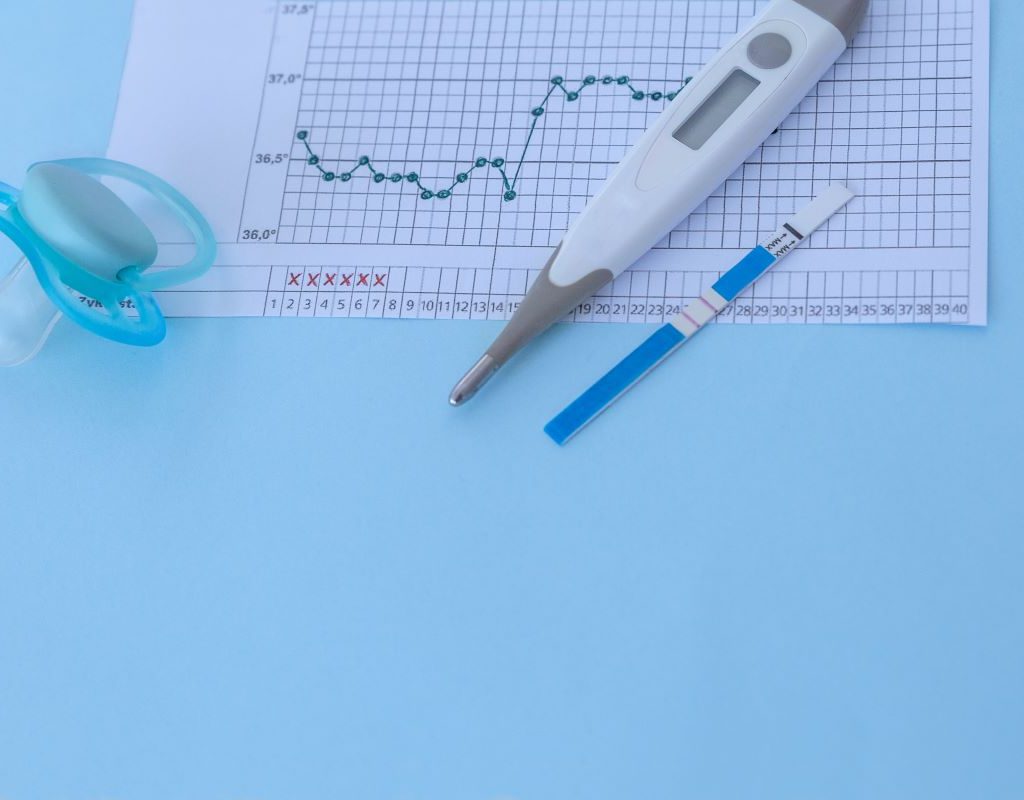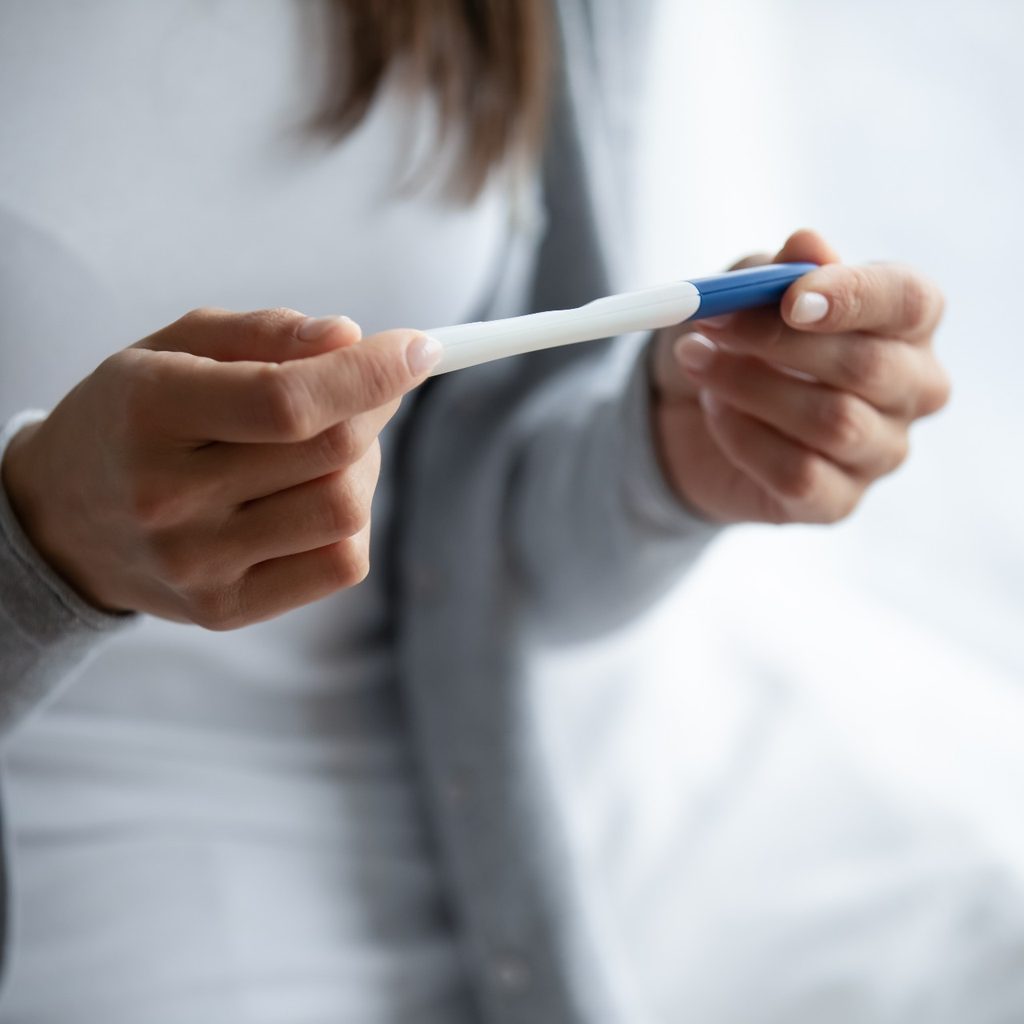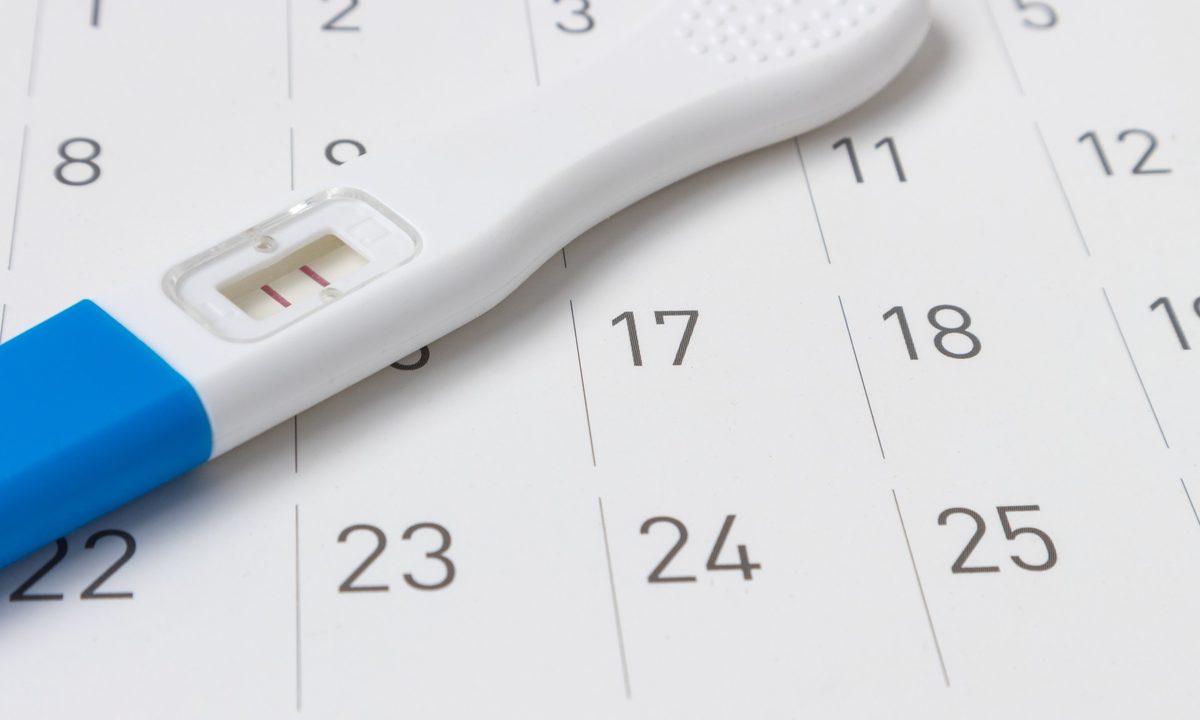Knowing when you’re ovulating is a key piece to getting pregnant. While some people are blessed to get pregnant without much effort, others require a bit more planning.
When couples can detect ovulation naturally at home, it’s a helpful way for them to target the most fertile time during a woman’s cycle. While it might seem like a daunting task on the surface, there are ways for you to track your ovulation cycle without professional intervention.
Most women can already sense when they are getting their period. So, you may already know your body’s signals for ovulation without recognizing them. You may get tender breasts, a twinge of pain known as Mittelschmerz, increased sexual desire, or other signs personal to your own body.
Since these signs are not an exact science and not all women may experience them, tracking your ovulation cycle might be a more precise option when trying to predict that fertility window each month. It’s also not difficult or terribly time consuming to track an ovulation cycle. These five methods for detecting ovulation offer couples a much more specific time frame on when ovulation occurs, increasing the chances of conception.
Track your ovulation cycle with these five methods

1. Menstruation tracking
A straightforward method to detect ovulation naturally is to use an app to track your period each month. The app automatically predicts your next ovulation date and the fertile days around it. There are also charts you can use with paper and pencil to map out your menstrual cycle.
The smartphone menstrual tracking apps are mostly free and calculate all your past cycles as well in order to make the most accurate prediction possible You can even use multiple menstrual tracking apps and take the average of their ovulation predictions and try to pinpoint a more accurate fertile period. There are several menstrual tracking apps that are easy to use.
2. Basal body temperature
Your basal body temperature or BBT is your body’s resting temperature. Your BBT dips slightly right before ovulation. If you check your BBT every day, you can notice this dip as a sign of ovulation. To track your basal body temperature, take your temperature every morning and note it in a chart. You can use a paper chart or a fertility app. Keep the thermometer right next to the bed because it’s important to stay as still as possible when taking your temperature.
You don’t want to be up and in the bathroom when you do it. You must take your temperature before getting out of bed. Right before ovulation, the BBT will be slightly lower, and then the next day it will slightly rise. For a few days after the egg releases, the BBT will remain slightly elevated. These differences are often less than one degree so charting for a long time to know how much of a change is normal for you is important.
The temperature change is so slight that you need to use a basal thermometer instead of a conventional thermometer. A basil thermometer shows temperatures within a tenth of a degree. If you’re using apps to track your period, tracking this information in the same app can help make the ovulation prediction even more accurate.
3. Ovulation predictor kits
There isn’t any need to wait until you might be pregnant to start peeing on a stick. An ovulation predictor kit or OPK is a little stick just like a pregnancy test that detects a hormone in your urine. Instead of detecting a pregnancy hormone, it detects an ovulation hormone.
It is important to take care when reading ovulation test sticks. Just like pregnancy tests, there are different versions. Digital ones may give you smiley faces to indicate you are ovulating, but the traditional ones will have a control line and then a second line that will either not appear (a negative test) or will appear (a positive test). With a pregnancy, any second line regardless of how faint it is, is considered a positive. With an OPK, how dark the second line matters a great deal.
The second line, which detects the presence of the hormone indicating ovulation, will get darker and darker for a few days until it is just as dark as the control line. If you are waiting for your prime fertility window, you want to wait until the very peak fertility and not when you see the second line for the first time.
You actually don’t ovulate the moment you see the peak positive test on an OPK. A peak positive test indicates that you are about to ovulate. Ovulation will most likely occur 12-36 hours after the positive test. The average is typically within 24 hours. When trying to predict your most fertile time of the month, you can use an ovulation predictor kit in conjunction with menstrual and BBT tracking or on its own.
4. Cervical mucus
It may not be pleasant to think about and is certainly TMI when talking to your partner, but your vaginal discharge also changes throughout your cycle. At your most fertile time around ovulation, a woman’s vaginal discharge gets a consistency like egg whites. The clear and sticky discharge is another natural ovulation predictor. This discharge will last for two to three days during your fertile time.
5. Saliva ferning
This is a unique test where you look at some of your saliva on a glass slide under a tiny microscope. When your estrogen increases around the time of ovulation, your dried saliva makes a ferning pattern when looked at under the microscope. Strange as it sounds, this strategy actually works. When you’re not fertile, the saliva doesn’t look like anything. It will appear as bubbles.
The ferning pattern only appears and does so more often when a woman’s estrogen increases. Of course, to try this method, you will need to purchase a personal ovulation microscope. Once you get a personal ovulation microscope, it can be used unlimited times by cleaning off the saliva.
How can I confirm ovulation?

Using the methods we’ve outlined above can help you track your cycle to know when you’re ovulating, but if you want to be certain there are some methods you can use. Tracking your PdG (pregnanediol glucuronide, which is a urine metabolite of progesterone, can help you know when you’re ovulation.
The level of PdG rises approximately 24 to 36 hours post-ovulation. You can purchase PdG test kits, which consist of a urine stick, to tell you whether you are or are not ovulating based on your levels of PdG. Tests like these can be done at home and give you results in just minutes.
Tracking ovulation cycles

Remember that sperm can live for up to five days in the body, and you can get pregnant for 12-24 hours after ovulation. A woman’s fertile period is approximately five days before ovulation, the day of ovulation, and the day after ovulation. So, a fertile window is one week out of each month.
Using one or a combination of these five methods to guide you, it is possible to predict when you ovulate. Having intercourse within that most fertile part of the month increases the chances of getting pregnant. So, if you and your partner have been trying without success to conceive, detecting ovulation naturally is certainly worth trying.
If you have been tracking ovulation cycles for a year or more without conceiving, then it’s time to sit down with your doctor. Most OBGYNs recommend seeking help from a fertility specialist after a year or unprotected sex without conception. For women over thirty-five, the time frame is six months.




